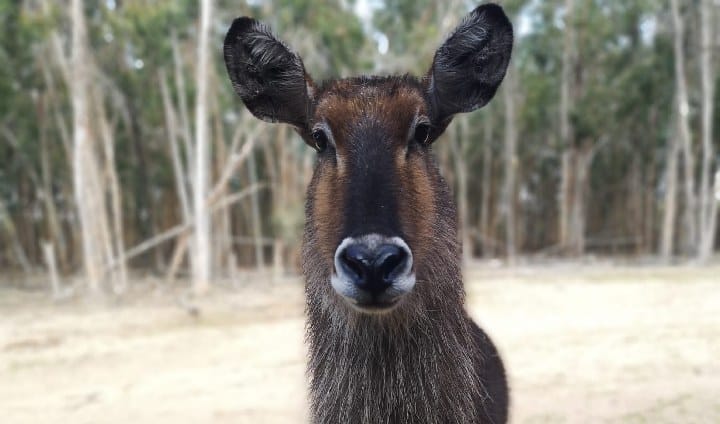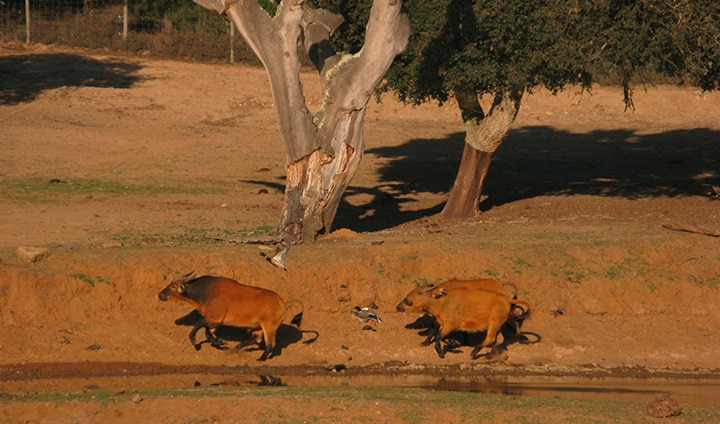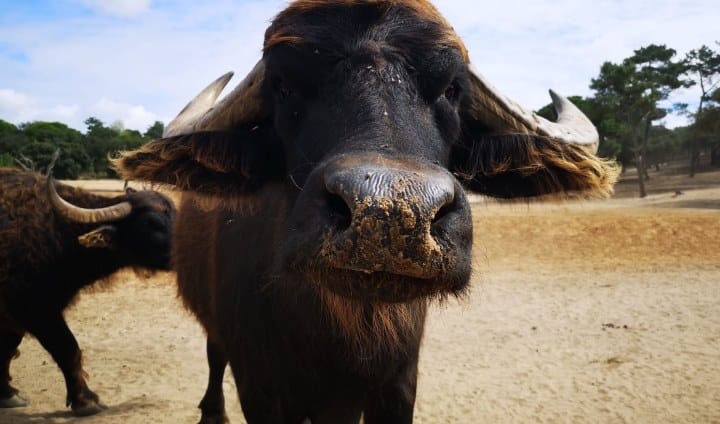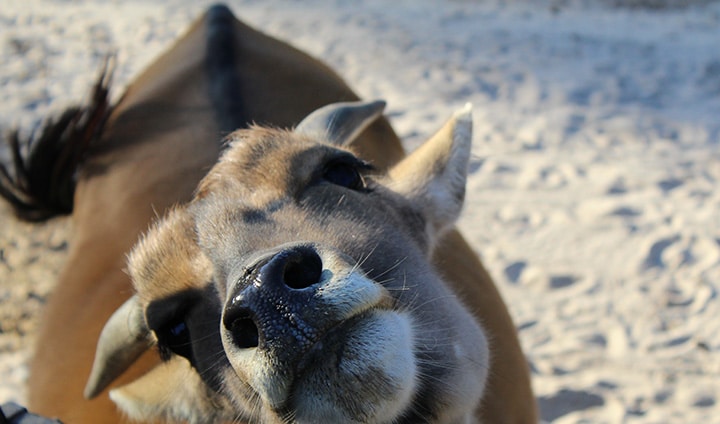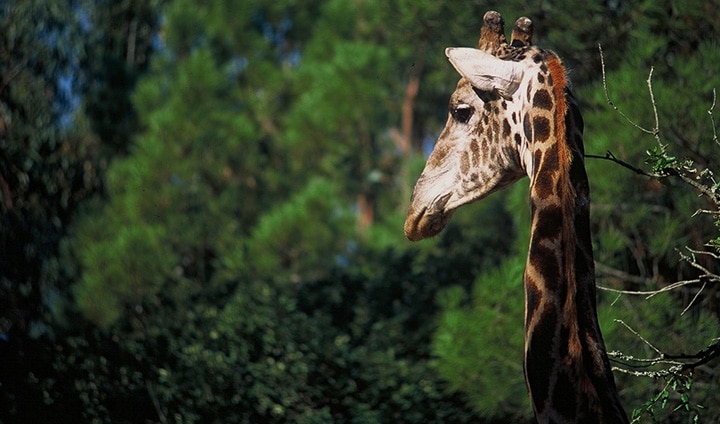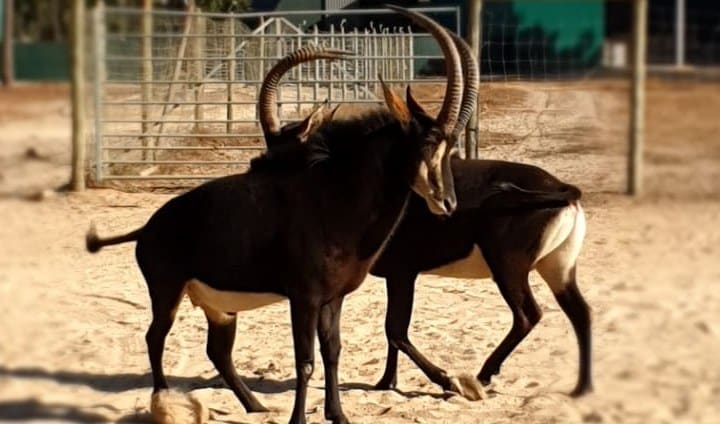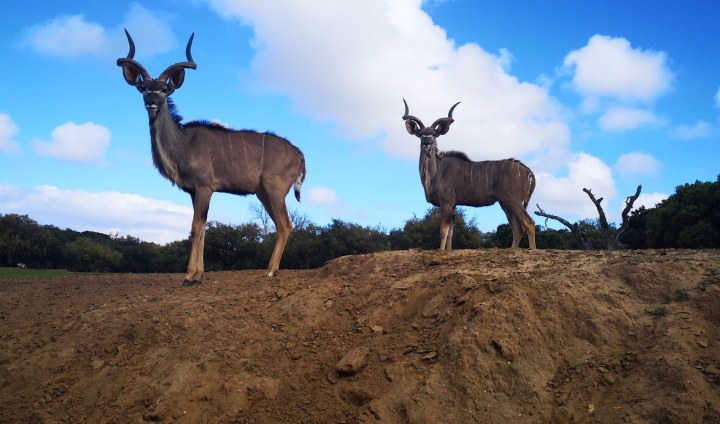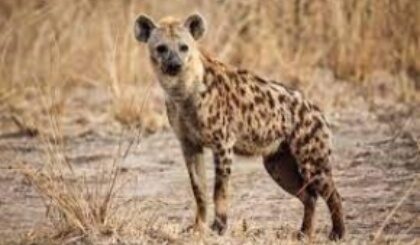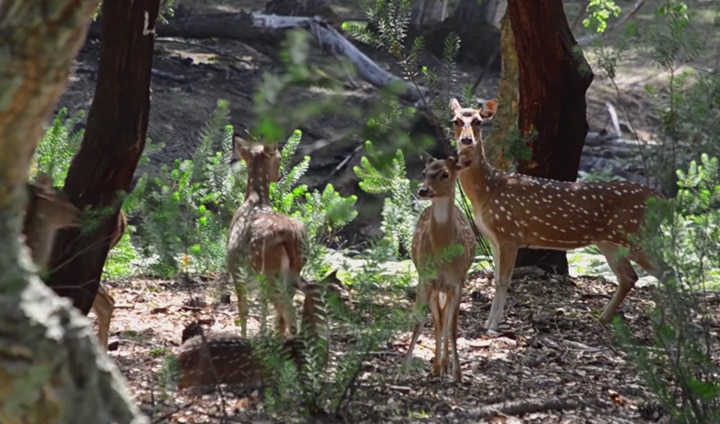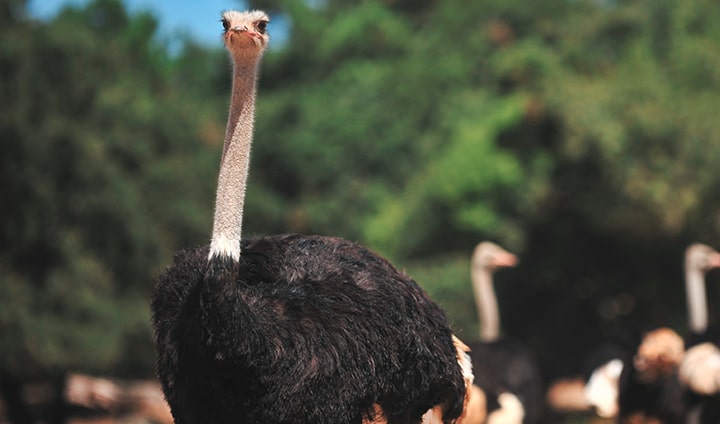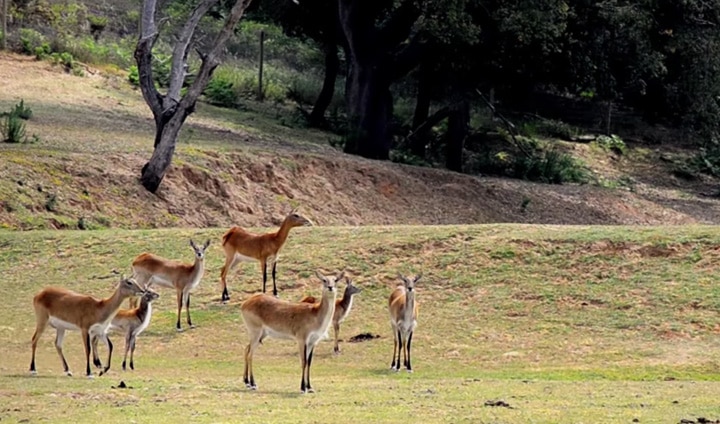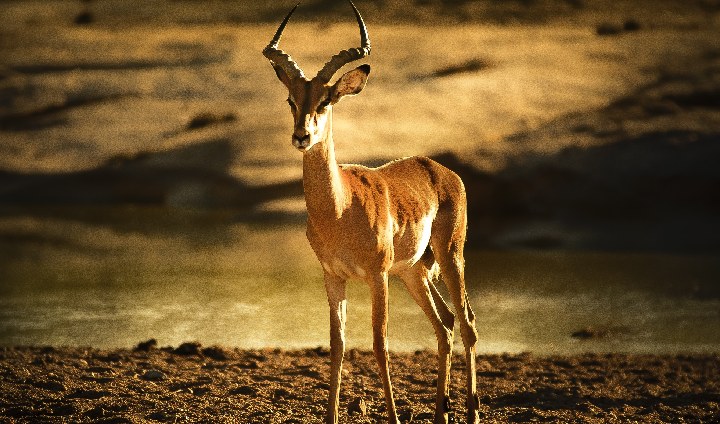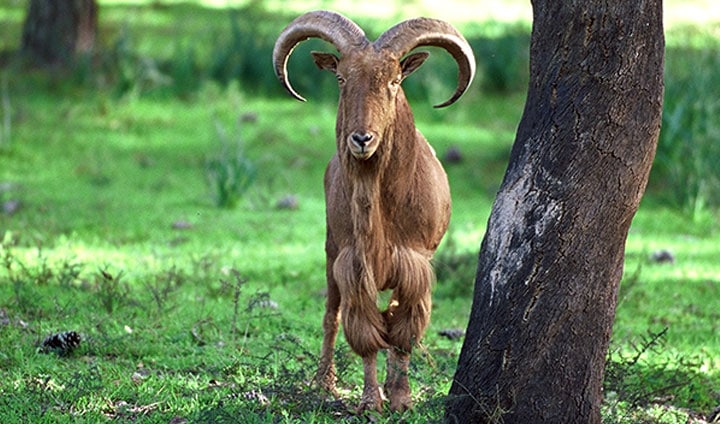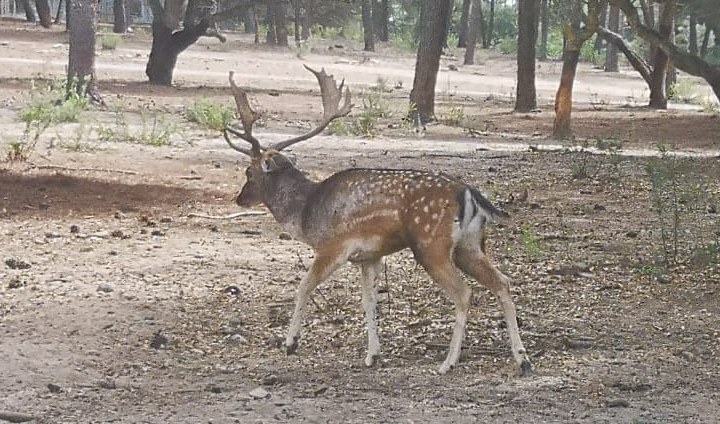Distribution and Habitat: They are mainly distributed across southern Africa. These animals prefer large pastures always close to water zones, as it serves as security due to predators.
Diet: These animals are highly dependent on water and can feed on a wide variety of herbs. It is a highly proteic diet.
Reproduction: As a rule, waterbucks only have one breeding season per year, with only 1 offspring being born after eight to nine months of gestation. A few days before delivery, the mother leaves the group in hiding places (or: leaves the group, to hiding places). The newborn calf takes only 30 minutes to stand up, however it is hidden in the first weeks of its life.
Behaviour: Waterbuck herds are shared by females, dominant males and submissive males, and everyone knows their place in the hierarchy. The size of the herd depends on the quality of the habitat, usually reaching a maximum of 10 individuals. Waterbuck activity is affected by seasonal differences, habitat, pasture conditions, distance from water and the number of predators in the area. When water is less available and the climate is too dry, these animals tend to rest more.
Conservation Status: Least Concern (LC)
Class: Mammalia
Order: Artiodactyla
Family: Bovidae
Dimensions: 1.7 m – 2.4 m length
Weight: 169 kg – 300 kg
Lifespan: 18 in Captivity and 18 in the Wild


